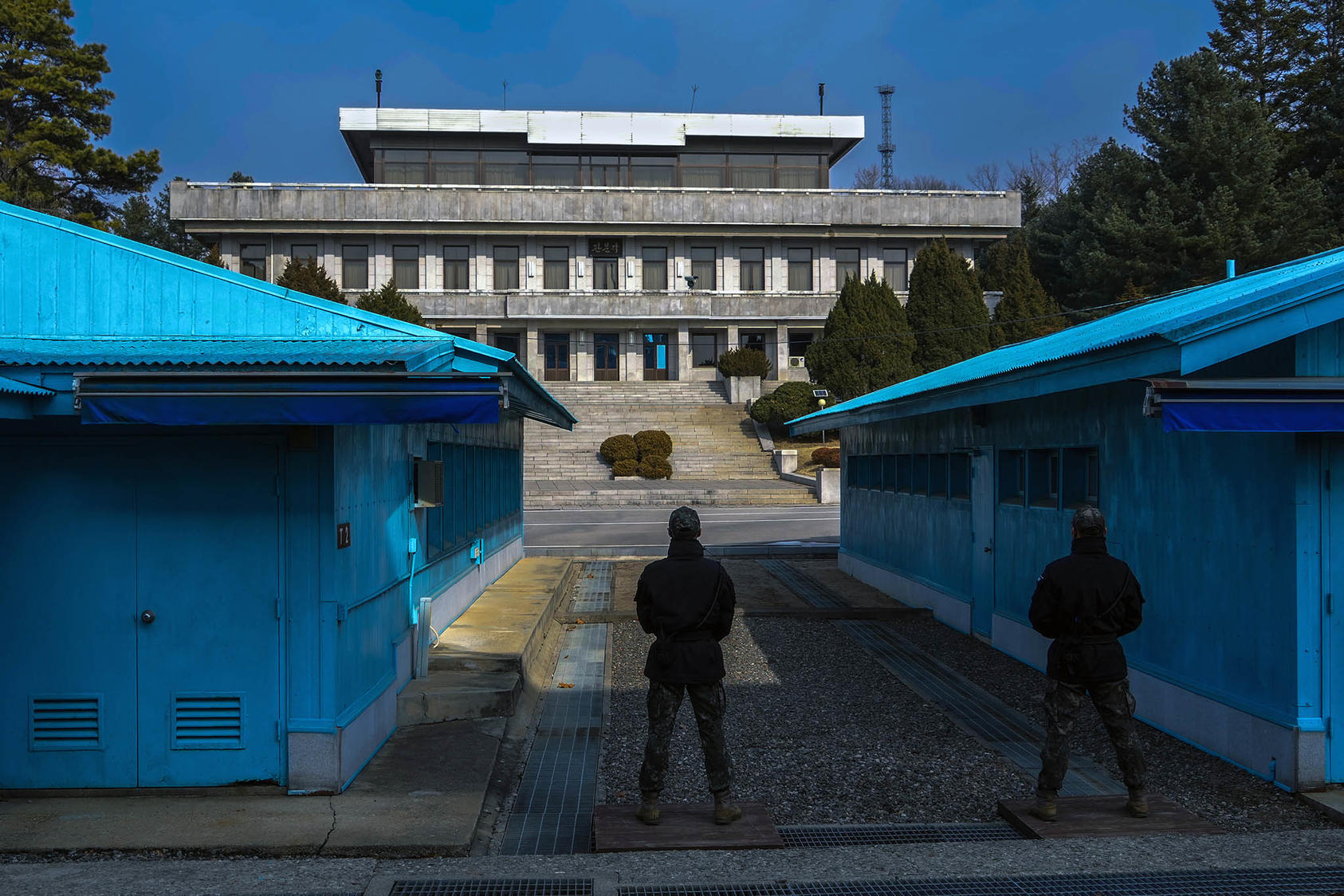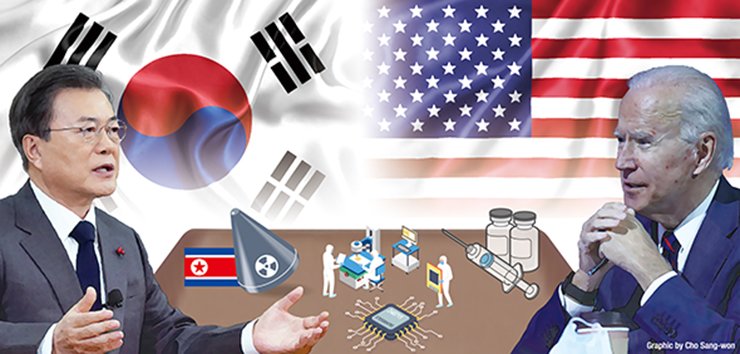On Sept. 3, 2017, North Korea conducted its sixth nuclear weapons test, the largest one yet, with 50 kilotons of explosive power that registered a magnitude of 6.1-6.3 on the Richter scale. In the National Security Council meeting following the nuclear test, Moon ordered his staff to devise “the strongest possible military response against North Korea’s provocations.” The next day, on Sept. 4, South Korea’s army test-fired its Hyunmoo-2A ballistic missiles with a range of 300 kilometers, while South Korea’s air force struck its mark with its long-range SLAM-ER surface-to-ground missiles. Both were designed, for the first time, to demonstrate Seoul’s capacity in action to precisely strike North Korea’s leadership.
The Moon administration also coordinated closely with Washington, especially through its spy chief, Suh Hoon, who had a strong relationship with then-CIA Director Mike Pompeo, and through National Security Director Chung Eui-yong, who maintained a tight house-to-house coordination with U.S. National Security Advisor H.R. McMaster. Seoul’s position was clear: The Moon administration would engage North Korea with prudence and persistence, and North Korea and the United States would conduct dialogue through South Korea.
On Dec. 19, 2017, Moon gave a remarkable interview to NBC News, which was intended to promote the Pyeongchang Winter Olympics in February 2018. Moon said he suggested to Washington that a joint military drill be postponed and invited North Korea to participate in the Winter Olympics—a daring gambit that publicly floated an exchange. Thirteen days later, in his New Year’s address, Kim Jong Un responded favorably and sent his sister Kim Yo Jong as a special envoy to Seoul.
From January 2018, I began traveling to Washington to coordinate with my counterparts in the White House the North Korea policy of South Korea and the United States. As the situation on the Korean Peninsula thawed much faster than expected, my role was to make sure that there would be no daylight between the positions of Seoul and Washington. Because of Washington’s “maximum pressure” policy, much of the discussion was couched in hypothetical terms: If Pyongyang proposes a dialogue, shouldn’t Washington be ready?
On March 5, 2018, Chung, as South Korea’s special envoy to the North, visited Pyongyang and then flew to Washington just three days later. After meeting with Chung, Trump decided to hold a summit meeting with Kim. On April 27, 2018, Moon and Kim held their first summit at Panmunjom, in the DMZ, in which Kim asked Moon many questions about how to gain the trust of the United States. But in April, John Bolton, Trump’s new national security advisor, suggested the “Libya model” for North Korea—referring to forcible denuclearization by foreign powers. This idea is anathema to Pyongyang, which has long feared its regime falling in the same way as Libyan leader Muammar al-Qaddafi’s eventually did. North Korea responded testily to Bolton’s statement, which caused Trump to abruptly cancel the summit.
Then came an urgent message from the North: Kim wished to meet Moon immediately. The two leaders quickly arranged to meet at Panmunjom on May 26, in which North Korea reaffirmed its intention to hold the summit. The result was the first-ever meeting between the United States and North Korea, held in Singapore on June 12, 2018.
By resuscitating the canceled summit, the meeting between Trump and Kim was a historic achievement on the part of South Korea’s diplomacy as well. During the inter-Korean summit held in Pyongyang in September 2018, Kim personally thanked Moon for arranging the meeting with Trump. At the summit in Pyongyang, the two leaders affirmed that the U.S.-North Korea negotiations must proceed for the complete denuclearization of the Korean Peninsula and specifically pledged that North Korea could dismantle its Yongbyon nuclear facility complex, if corresponding measures from the United States were provided. That summit led to a historic Comprehensive Military Agreement (CMA), a de facto nonaggression pact between the two Koreas, on Sept. 19, 2018.
But it all fell apart in Hanoi, during the second U.S.-North Korea summit, on Feb. 27-28, 2019. After a 66-hour train ride, Kim arrived in Hanoi and offered Trump a proposal to dismantle the Yongbyon nuclear facility complex, which he had pledged to do in the joint Pyongyang declaration with Moon. In return, he asked for the lifting of five sanctions in the civilian and commercial sectors that affect the lives of North Koreans. But the United States demanded more than the dismantling of the Yongbyon complex, and the negotiations broke down. I cannot say exactly why the talks fell apart because I was not in the room. As far as I could tell, both Trump and Kim were responsible. But Trump left Hanoi first, and he should not have.
Although the Moon administration used numerous channels to restart the dialogue, the global spread of COVID-19 in February 2020 made meaningful communication all but impossible. Lacking the ability to implement public health measures, North Korea instead chose to shut down its country. Overreacting to South Korean civic groups’ balloon-launching campaign, the Kim regime cut off the inter-Korean hotline in June 2020 and demolished the inter-Korean liaison office in Kaesong. Flustered with a sense of betrayal, I cursed under my breath as I saw the building’s destruction from the Blue House’s Crisis Management Center.
Did we fail? We did not. What would the situation on the Korean Peninsula be like if the Moon administration hadn’t engaged North Korea as soon as the South Korean president’s inauguration in May 2017? What would the DMZ look like today if there were no CMA? What alternative is there other than to seek peace? I don’t know how anyone can deny the five years of peace on the Korean Peninsula under the Moon administration. Not a single South Korean soldier lost his life in an inter-Korean military conflict. Not a penny of South Korean money went to Pyongyang. South Korea and the United States were in lock step to bring Kim out to the negotiation table.
The significance of the CMA is deeply underappreciated. The DMZ had long been a misnomer: Inside the zone, North Korea had 160 guard posts and South Korea 60 guard posts. Each post held approximately 40 soldiers. In other words, 8,800 heavily armed soldiers were inside the DMZ each day, ready to engage in combat at any time against their adversaries located just a shouting distance away. The CMA ended this standoff, as the two Koreas withdrew their soldiers from the guard posts inside the DMZ.
The dividends were imminently felt. The Lee Myung-bak administration, from 2008 to 2013, saw 228 provocations from North Korea in the DMZ; the Park Geun-hye administration, from 2013 to 2017, saw 108 such provocations. The Moon administration, from 2017 to 2022, saw just five. By significantly reducing the possibility of an inadvertent conflict, the CMA laid the groundwork for North Korea’s denuclearization by heading off a contingency that could sink a negotiation.
Those who argue that the Moon administration failed do not appreciate the fact that peace-making is a long, arduous process. The current cease-fire regime between the two Koreas is, at best, what sociologist Johan Galtung referred to as “passive peace”: a fragile state that could ignite into a war at any time. In five years, the Moon administration took meaningful steps forward. But no one, not even the critics, can fundamentally transform the security landscape of the Korean Peninsula in just five years. The establishment of a peace regime and the complete denuclearization of the Korean Peninsula will require wisdom for diplomacy, patience for negotiation, and courage to face a hostile counterpart. We need to be courageous again.
Image: U.S. President Donald Trump and North Korean leader Kim Jong Un talk before a meeting in the Demilitarized Zone separating North and South Korea on June 30, 2019. BRENDAN SMIALOWSKI/AFP VIA GETTY IMAGES




